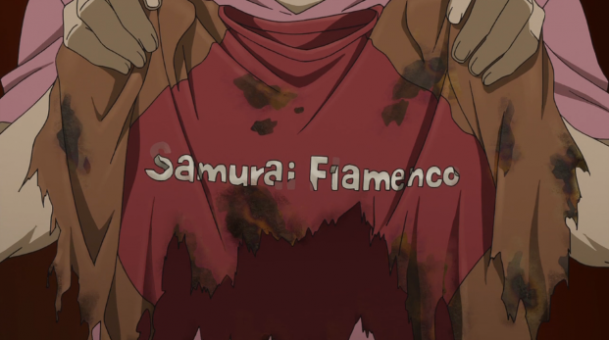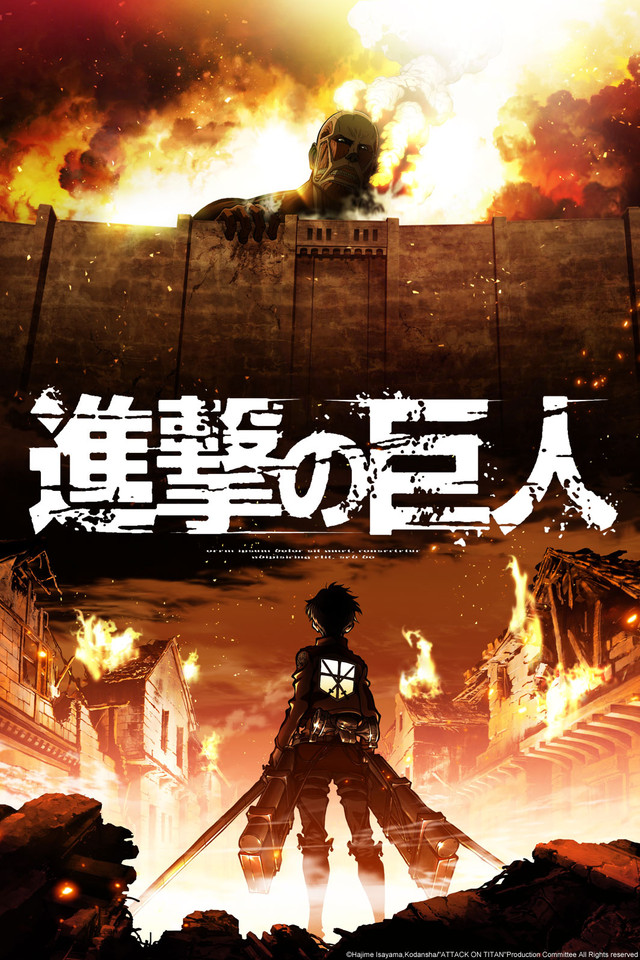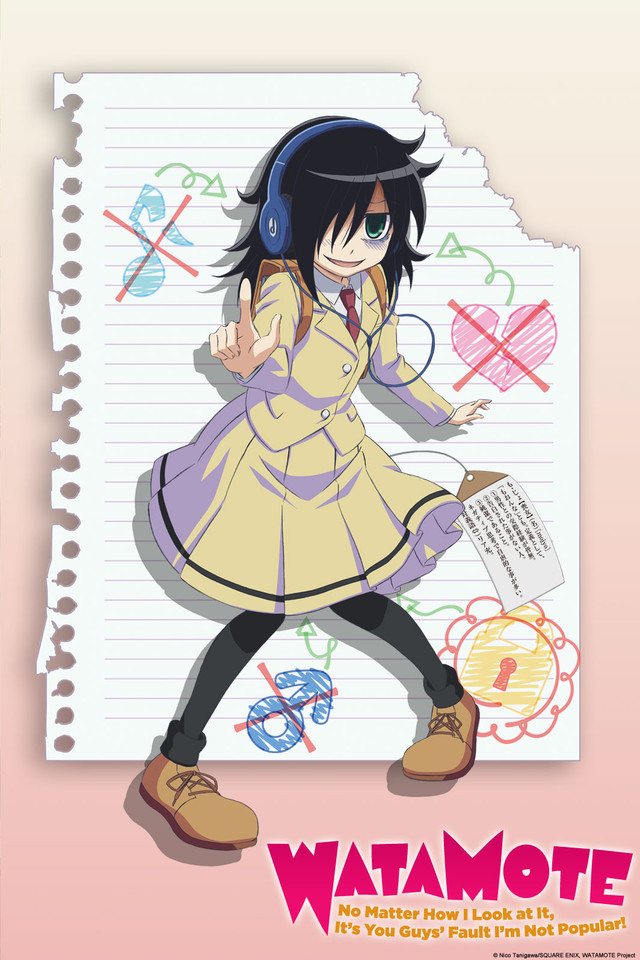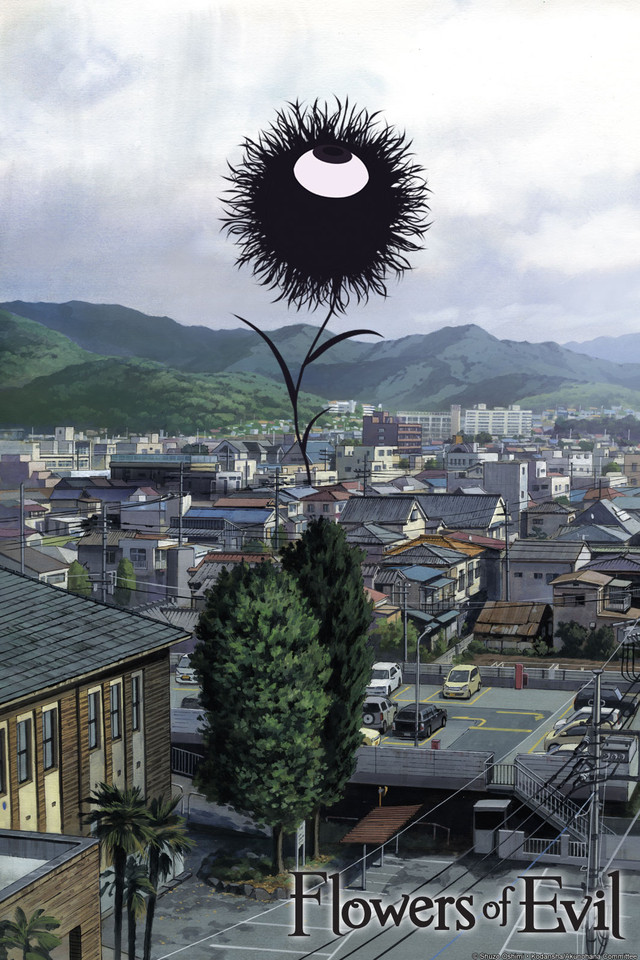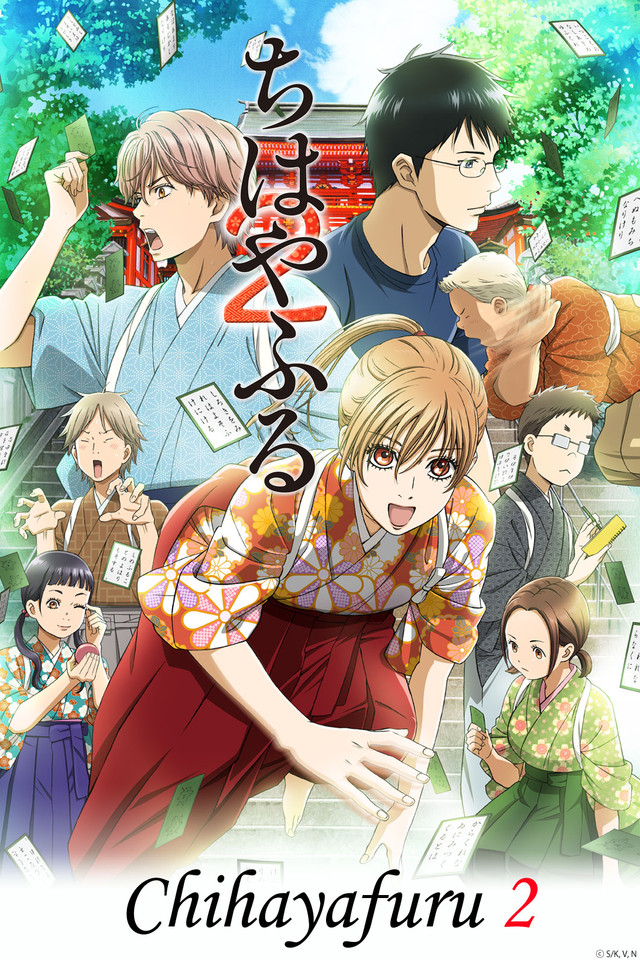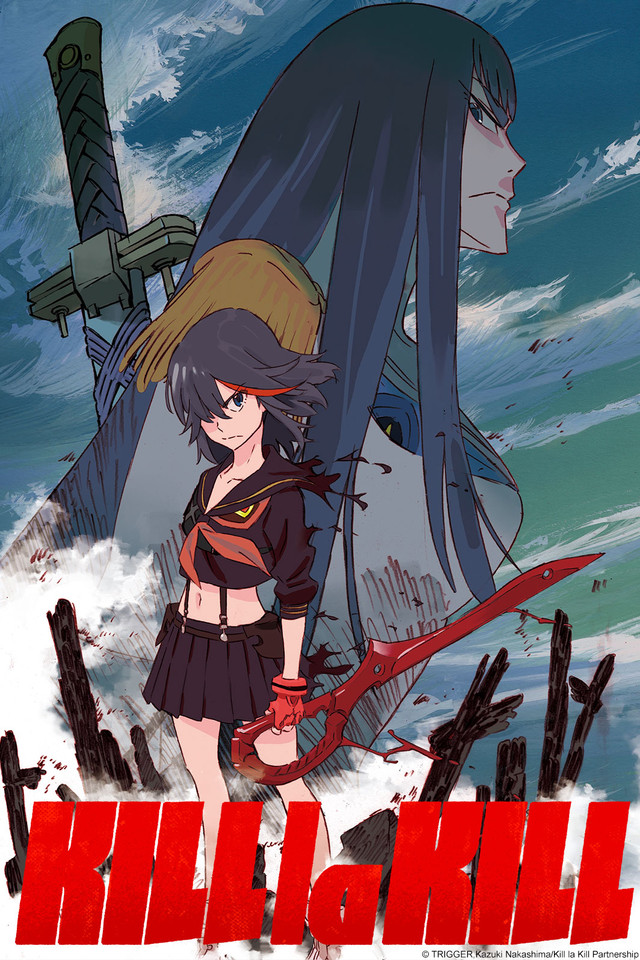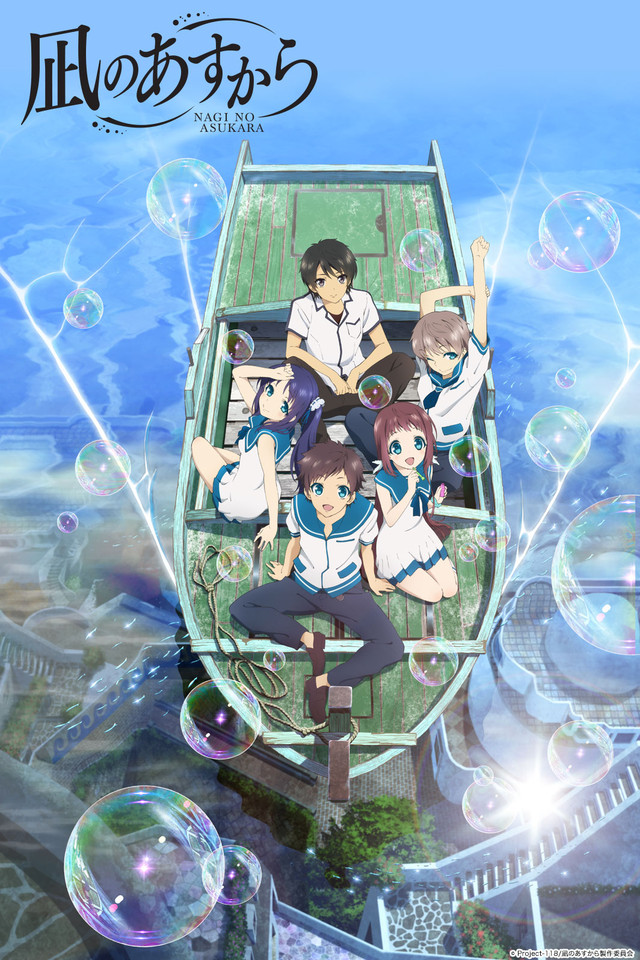I watched something like 94 anime that premiered in 2013,
most of which were dropped after one episode. But there are standouts, as there
always will be. I compiled my list of simply the best stuff I saw in 2013, and
then forcibly narrowed them down to 10. It was actually pretty easy until I got
to the nine spot. Ten I knew was going to be Kill la Kill and Samurai
Flamenco together, simply because they have been great but aren’t over yet
so I don’t want to snap to any judgments.
There are also a lot of shows missing from this list. I’d
say most notably is Gargantia, which
I loved the second half of the first episode and the next two episodes of it
very much. But it never really surpassed itself from those moments, and
devolved into moe slice of life some of the time.
Also missing are the completely pleasant but otherwise
unnoticeably. Stuff like Kotoura-san,
Gingitsune, Encouragement of Climb, Love
Live!, Stella Women’s Academy High
School Division Class C3, and of course Free! Kotoura and Gingitsune were fine, but I can’t say
that I ever need to watch them again. They’re the type of show that’s really
nice to sit down on a lazy Sunday afternoon and watch at your leisure (except
maybe that first episode of Kotoura).
Encouragement of Climb was a cute
little short, but it suffers from the same problems that Kotoura and Gingitsune
did. I probably liked it the most, since the staff behind that really knew what
to do with three minutes.
Love Live!,
however, is completely something I’d watch again because I have a disease. A
disease that makes me love musicals for all their stupid goodness, and Love Live! is a pretty adorable
musical, through and through. Plus it has some really catchy tunes in things
like “Start:Dash.”
The latter two shows, Free!
and C3, are both sports anime
that were merely pedestrian. Free!
had ulterior motives aside from the sports (like being beautifully animated
boys in swimsuits), but it was actually pretty good sports fare. C3 was girls with guns, further
promoting gun culture by way of being cute with them (unlike Upotte!, which taught you everything
you possibly needed to know about these anthropomorphized guns). But C3 was actually an incredibly fun show
that let you escape within the world of airsoft, reminding you and your friends
that you should really go do that sometime.
From the world of sequels, The World God Only Knows season three and AKB0048 Second Stage are also missing. I liked the first two
seasons of The World God Only Knows well
enough, because it was playing with the very idea of a harem. But season three
touted that it was indeed Keima that is the only person ever that can do
anything and that was a little frustrating. Coupled with the unnecessarily
complicated Goddesses stuff, it just didn’t do it for me like the first two
seasons did. Meanwhile, AKB0048,
helmed by Shoji Kawamori of Macross fame, was never amazing, but was always
better than what it deserved to be (which is an advertisement for real-life
Japanese pop band AKB48). The first season put us into a dystopia similar to
Equilibrium and was incredibly fun to watch the girls try and become members of
00. The second season kept up that rhythm and really made us feel like the
girls earned it when they finally were accepted as full members.
The biggest thing I’m missing from here is MAOYU, the show that is directed by the
same guy who did Spice and Wolf,
Takeo Takahashi, and it shows. The main characters, literally just named Hero
and Demon Lord, are even voiced by Jun Fukuyama and Ami Koshimizu, Lawrence and
Holo respectively. MAOYU
accomplishes so much while just anthropomorphizing these names into
well-rounded characters. No one is given a name and we grow to love them
anyway.
I also didn’t even watch Tamako Market because I don’t have an Anime Network subscription.
And there’s Nagi no Asukara, Yowamushi Pedal, Magi, Gundam Build Fighters,
and Ace of Diamond that are still
airing. But enough about that. We came here to talk about the best anime of
2013 and dammit that’s what we’re going to do.
Number 10: Samurai Flamenco and Kill la Kill
I knew I had to include these on the list, simply because
they’ve been so good through 13 episodes. But they aren’t over yet and they’d
likely be higher on my list if they were done with.
Kill la Kill is
the next project from Hiroyuki Imaishi and his crew at trigger and it’s swept
the anime nation with ecchi cosplay of Ryuko and Satsuki. It’s merits don’t end
with the cleavage of the main characters, though. It is an incredibly fun show
that is always able to turn the dial up one more level right after you thought
it was done.
Samurai Flamenco
does the same thing, but in a way different way. We start the show thinking
that it’s going to be a straight up comedy about a guy trying to be a
superhero, but it quickly turns into an amazing action piece that showcases
what Samurai Flamenco and the Flamenco Girls have learned throughout 12
episodes of fun. It continuously turns the idea of the singular superhero on
its head and, with its next 12 episodes, promises to turn the idea of the
sentai on its head as well (exemplified when all five members come out as
Flamenco Red). From content itself, it could easily be my favorite of 2013.
Number 9: Attack on Titan
This is truly the anime that took the world and the internet
by storm. Attack on Titan really
makes you want to care for the characters and the situation they’re in. But
more than that, it is an incredible metaphor for fear. The titans are fear
incarnate and we humans can only make coping mechanisms to deal with it (the maneuver
gear, the cannons, etc.). It also does a great job at creating character agency
for everyone involved, especially Jean, who is the character of the show and
don’t let anyone tell you otherwise.
Number 8: Watamote
Otherwise known as Watashi
ga Motenai no wa do Kanagetemo Omaera ga Warui! or No Matter How I look at It, It’s You Guys’ Fault I’m Not Popular!
It’s mercifully shortened to Watamote
and it is a show completely dedicated to exploring the character of Tomoko and
why she is the way she is, which is to say relatively insufferable yet
completely lovable. She has a crippling social anxiety disorder which makes it
difficult for her to even speak to her teachers—or anyone who isn’t her family
or Yu, a friend from middle school. Despite this, most of what happens to her
is completely her fault for bemoaning the “bitches” in her class or just not
noticing the social cues from her classmates that are legitimately trying to
become friends with her. It is just an incredible series to sit through that is
at once enjoyable, reprehensible, and thought provoking.
Number 7: Flowers of Evil
Undoubtedly one of, if not the, most divisive anime this
year, Flowers of Evil is an
incredible exploration of a kid that’s just trying to look cool. Unfortunately,
his idea of looking cool is reading Baudelaire’s Les Fleurs du mal to impress Saeki and his friends. His argument is
that he read this difficult book, thus he must be intellectual. It’s actually
much more complex than that, dealing with the stigma of trying to appear normal
yet bottling everything else up inside culminating in one of the greatest
episodes in anime history. Flowers of
Evil is an extremely deliberate series that’s sometimes frustrating in how
slow it moves, because you know how good it can be.
Number 6: Silver Spoon
The next big thing from Hiromu Arakawa, mangaka for Fullmetal Alchemist, turns out to be a
pleasant little farm story about a city kid who goes to an agricultural school
in Hokkaido. Much of the story is said to be based on Arakawa’s own life, as
she grew up on a farm herself. What the show does is showcase what it really
means to grow, kill, and then eat livestock for a living, which is not as glamorous
a business as it sounds (and it didn’t sound very glamorous to begin with).
Watching Hachiken, who is both a great audience surrogate and an amazing
character in his own right, grow to love a pig, buy the pig, and then eat the
pig is one of the most emotional moments of the year and perhaps the greatest
love story of the year…
Number 5: Genshiken Nidaime
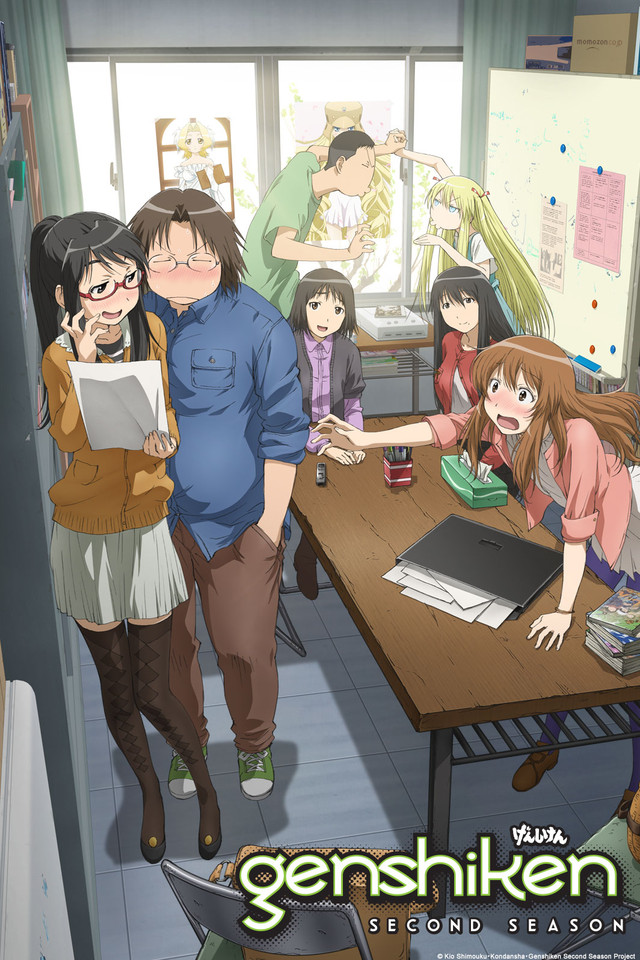
…Right behind the unrequited love of Madarame to Kasukabe,
which is years in the making and provided me with my number one episode of the
year. Genshiken picks up right where
the second season left off (Nidaime in this translation I guess means
generation? But Crunchyroll translated it as season, which confuses everyone).
Ogiue is going out with Sasahara, who’s working as an editor at a manga
company. Ohno is still in school, trying to get through her last year, and
Tanaka is still supporting her from the sidelines with his own work. Kugeyama
has largely fallen off the big anime scene, as he’s working his own office job
now. And Madarame…Madarame is the tragic guy who just can’t leave his former
club behind. But we’re glad he’s around. New club president Ogiue and new
members Hato, Yoshitake, and Yajima work well off him, not to mention returning
champion Sue. For fans of the first two seasons, Nidaime is a great continuation and gives us precious little time
with the characters we’ve already grown to love.
Number 4: Kyousougiga
I didn’t believe this would be as good as everyone said. I
didn’t believe that the mess of a first episode was actually a brilliant how-to
on how to tell a story (along with the subsequent episodes, of course). But I
finally visited it and, with a few days off from work this week, finished it in
two days. Its first episodes are an amazing clinic in how to tell a non-chronological
story and its next episodes are a great example on how built up can lead to
payoff. Those first few episodes gave us near perfect character agency for
everyone involved in the finale and it only made that finale more potent as a
result.
Number 3: Gatchaman Crowds
Like Samurai Flamenco,
Gatchaman Crowds threw the idea of a
superhero out the window and rewrote the How to be a Superhero manual. Main
character Hajime asks such pressing questions like “Why do we have to wear the
mask?” “Why do we have to keep our identities secret?” and basically all the
other why questions you could ask a superhero. They’ve been answered hundreds
of times in various media, but why not just have the people help you fight the
bad guy instead of going it alone? Crowds
is certainly the greatest deconstruction of the superhero idea in 2013, and we
were lucky enough to get two great ones.
Number 2: Chihayafuru 2
I quickly fell in love with Chihayafuru after its bold move to do a two and a half episode
flashback at the very beginning of the series. But what this did was make us
completely in love with Chihaya, Taichi, Arata, and their struggles. Chihayafuru, like the best sports
anime, gives us a great sense of what our characters are trying to achieve. It’s
an amazing to see Chihaya succeed with her friends, like she did back in sixth
grade. Or to see her fail and lock herself in a closet after a huge loss. Or
cry after seeing her dad finally have a book full of newspaper clippings for
Chihaya and not just the older sister Chitose. Chihayafuru is a show that is incredible at building up its
characters to succeed and finally watching them succeed. But it’s also great at
building them up to succeed and watching them fail. Both sides of the coin,
both in karuta and their own lives, are explored and it makes this show one of
my favorites of all time, much less of 2013.
Number 1: Eccentric Family

How do I even begin to describe one of the greatest anime in
recent memory? Eccentric Family does
a great job at just letting us steep in the lives and the world of these
characters in beautiful Kyoto. Someone like Yasaburo is allowed to always be
calmly at center stage, yet never sure of what to do. Oldest brother Yaichiro
has to act like the man in the family even though he is clearly not prepared
for the role, still struck by the loss of his father. Yajiro is even more
tragic, having been the last person who saw their father before he died and now
relegating himself to a well, forever transformed into a frog. And little
Yashiro is just trying to keep the family together in any way he can, even
though it’s on the verge of falling apart. And their mother is acting as this
big woman, when she truly isn’t; she puts on the best façade of them all and
acts strong to convince her kids, and more importantly herself, that she doesn’t
just want to cry over the loss of her husband.
But it isn’t all sadness over their loss. The show actually
empowers each and every character, yes ever Yashiro, to great heights by the
time its final episode rolls around. Giving us the second best episode of the
year, fourth best opening theme, and fourth best ending theme of the year, Eccentric Family is a show to lose
yourself in. The lives of the Shimogamo family and the world of the tanuki they
live in. And that’s not even mentioning Benten, who would win best female
character were it not for Tomoko.
